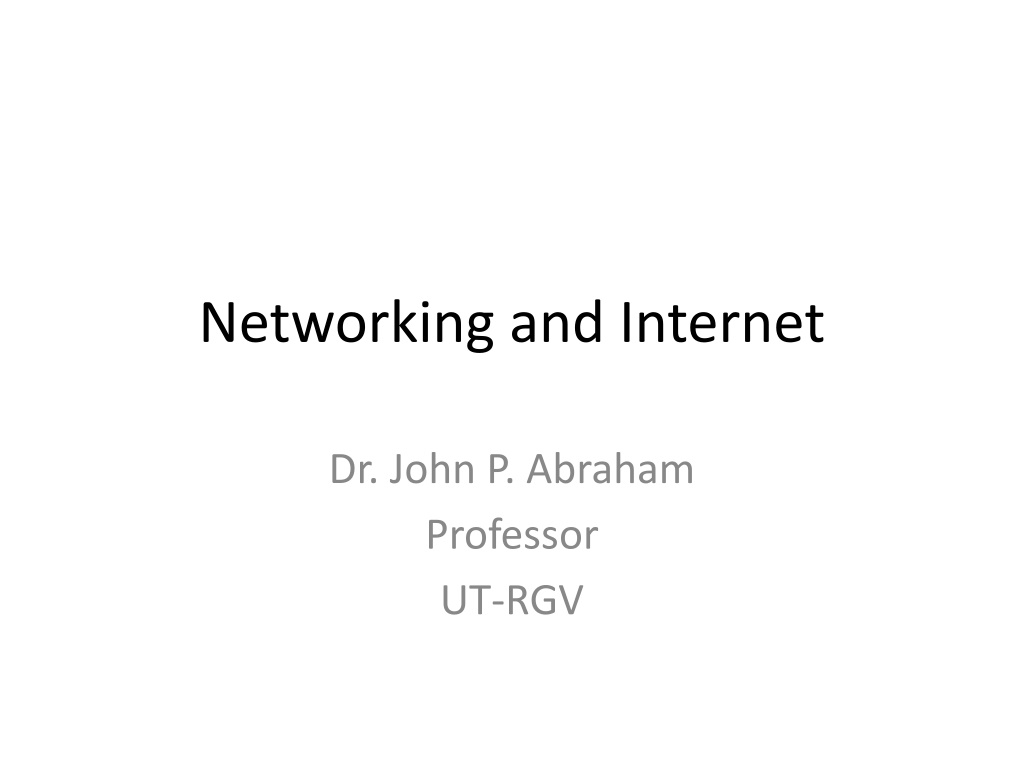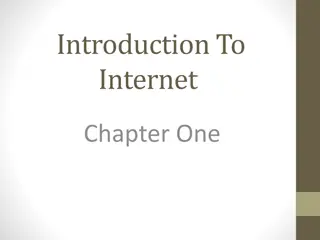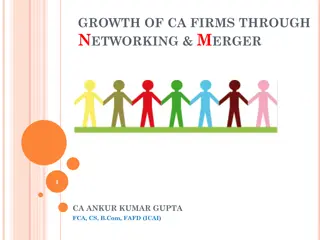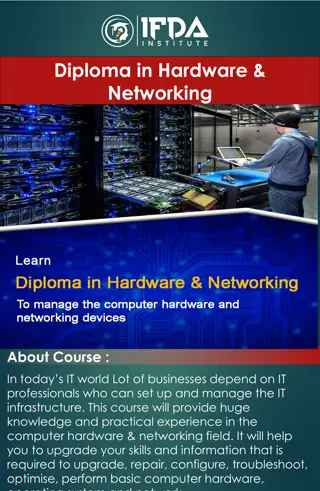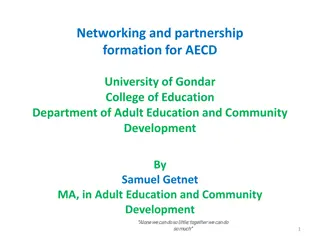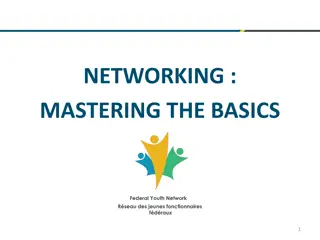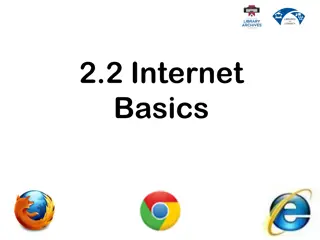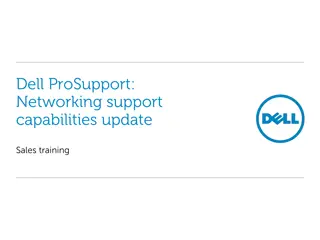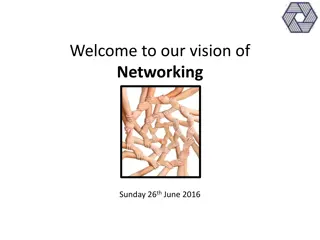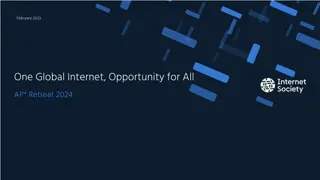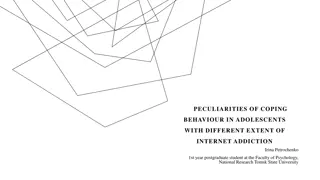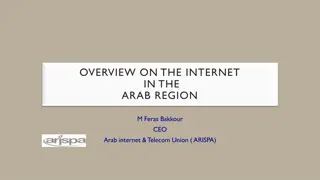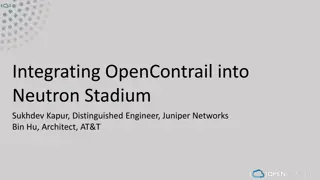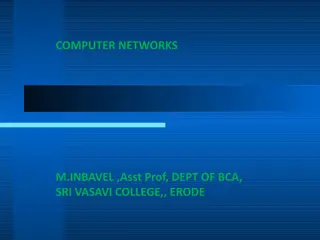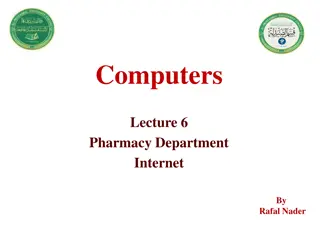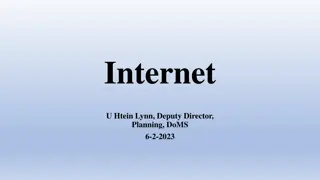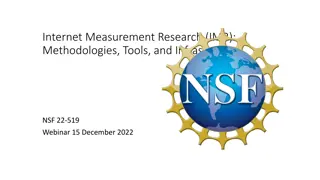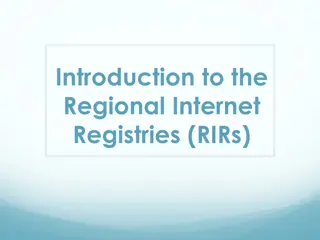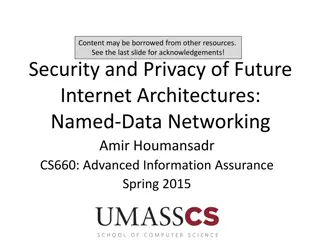Networking and Internet
Dr. John P. Abraham is a knowledgeable professor at UT-RGV specializing in Networking and Internet. His expertise in the field provides students with valuable insights and practical skills. Through his guidance, students delve into the intricate world of networking, exploring concepts such as data transmission, network security, and communication protocols. Dr. Abraham's teachings empower students to navigate the complexities of cyberspace and harness the potential of the internet for innovative solutions. Join his classes to enhance your understanding and proficiency in Networking and Internet technologies.
Download Presentation

Please find below an Image/Link to download the presentation.
The content on the website is provided AS IS for your information and personal use only. It may not be sold, licensed, or shared on other websites without obtaining consent from the author.If you encounter any issues during the download, it is possible that the publisher has removed the file from their server.
You are allowed to download the files provided on this website for personal or commercial use, subject to the condition that they are used lawfully. All files are the property of their respective owners.
The content on the website is provided AS IS for your information and personal use only. It may not be sold, licensed, or shared on other websites without obtaining consent from the author.
E N D
Presentation Transcript
Networking and Internet Dr. John P. Abraham Professor UT-RGV
General Idea Each computer contains an entire set of layered protocols When an application sends a message The message passes down through the layered protocols A given layer adds information and forms a packet The computer transmits the final packet When a packet arrives The packet passes up through the protocol layers A given layer performs processing and passes the packet up to the next layer The application receives the message that was sent
Some Commercial Network Systems Apple Computer Appletalk Banyan Vines Digital Equipment Corporation DECNET IBM SNA ovell Netware Ungermann Bass NET/ One Xerox XNS
Some Research Projects Xerox Palo Alto Research Center Ethernet MIT and elsewhere Token passing ring networks Department of Defense ARPANET SATNET Packet radio net The global Internet
Which Organizations Issue Standards? IEEE (Institute of Electrical and Electronics Engineers) IETF (Internet Engineering Task Force) ITU (International Telecommunications Union) ISO (International Organization for Standardization) W3C (World Wide Web Consortium) ...and many others
Physical Layer Underlying transmission media Electromagnetic energy and its use Representation of information in signals Electrical properties such as radio frequencies and voltage Associated hardware
Datalink Layer Communication between a computer and network hardware Also called Network Interface layer Mechanisms for gaining access to shared media Hardware (MAC) addressing Packet (frame) formats Packet (frame) types and demultiplexing Error detection
Internet Layer Communication between a pair of computers across the Internet Internet packet format (datagram) Internet addressing model and address assignment Forwarding of Internet packets Dividing an Internet packet into smaller packets for Transmission Error detection and reporting
Transport Layer Communication between a pair of applications Demultiplexing among multiple destinations on a computer Reliable delivery and retransmission Mechanisms to control data rate and avoid congestion
Application Layer Format and representation of data and messages Procedures applications follow to Transfer data Handle errors or unexpected conditions Meaning of messages exchanged Internet infrastructure such as routing and DNS
Dr. Abrahams Summary of OSI Physical Wiring, connectors, bits, modulation, hub, repeater Data link MAC address, Error detection (correction) media access, LAN connection (logical link), Switch, Bridge Network IP address, path finding-routing, host-to-host connection, Router Transport Process-to process connection, add reliability Session Establish/disable connection, restore session, user authentication, Presentation formatting data (ASCII, Unicode, etc), Encryption/Decryption Application write and run applications
